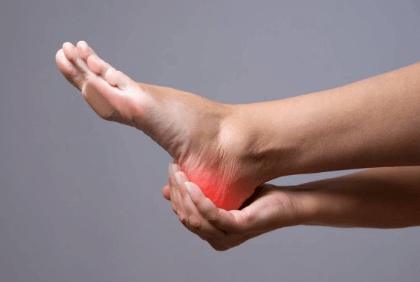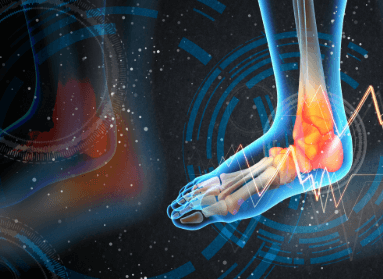Heel Pain & Cancer Risk: What to Know
Introduction
Heel pain is a common discomfort for millions—often blamed on conditions like plantar fasciitis, heel spurs, or Achilles tendonitis. But what if that nagging ache isn’t just a foot injury? Could it, extremely rarely, be a sign of cancer? The short answer: yes, but it’s exceedingly uncommon. Most heel pain comes from mechanical issues—overuse, inflammation, poor footwear—not malignancy.
However, in rare cases, persistent heel pain can stem from bone tumors, metastatic cancer, or soft-tissue growths. This article aims to clarify when heel pain could be more worrying, highlight warning signs, and guide you on when to seek medical evaluation. Whether it’s a common heel condition or something more serious, you’ll learn the key clues that shouldn’t be ignored—and how to get the right treatment or peace of mind.
1. The Usual Suspects: Common Causes of Heel Pain
Most heel pain is benign. Key culprits include:
- Plantar Fasciitis: The most frequent cause, due to inflammation of the tissue band on the sole; sharp pain, especially with first steps in the morning.
- Achilles Tendonitis: Pain at the back of the heel from overuse or tight calf muscles.
- Heel Spurs: Bony growths often developing alongside plantar fasciitis, sometimes causing stabbing pain.
- Bursitis, Stress Fractures, Heel Pad Syndrome, Nerve Issues: Other common, treatable causes.
These typically respond to rest, stretching, orthotics, NSAIDs, or physical therapy—and improve in weeks to months.
2. Rarely—but Not Never: Cancer and Heel Pain
Though extremely unlikely, heel pain can rarely be linked to malignancy:
- Primary Bone Cancer: Very seldom seen in the heel. Pain tends to be deep, persistent, and progressively worse.
- Metastatic Cancer: Tumors from breast, lung, prostate, endometrial, or urothelial origins may spread to the calcaneus (heel bone)—a rare phenomenon in the feet (only 0.007–0.3% of bone metastases). Case reports show lung cancer initially presenting as heel pain.
- Soft-Tissue Sarcomas: Rare tumors in muscles or fat near the heel may press on nerves or bone, producing pain.
- Bone Cysts or Tumors: Both benign and malignant lesions—like intraosseous lipomas—can cause heel pain and may be found incidentally on imaging.
3. Red Flags: When Heel Pain Warrants Deeper Investigation
While most heel pain is harmless, certain warning signs deserve prompt attention:
- Persistent or Progressive Pain: Does not improve despite rest, stretching, or treatment.
- Night Pain: Discomfort that wakes you from sleep or is unrelated to activity.
- Swelling, Lumps, or Skin Changes: Unexplained mass or altered skin over heel.
- Systemic Symptoms: Unexplained weight loss, fatigue, fever, or changes in bowel/bladder habits alongside heel pain.
- History of Cancer: Previous cancer increases likelihood of metastasis.
4. Diagnostic Path: From Heel Pain to Answers
If primary causes are ruled out or red flags arise, these steps follow:
- Physical Exam & History: Assessment of location, timing, triggers, and associated symptoms.
- Imaging:
- X-ray: First look for fractures, bone lesions, spurs, or cysts.
- MRI / CT Scan: Detailed evaluation of bone and soft tissues to detect tumors or metastatic lesions.
- Bone Scan: Sensitive tool to check for bone metastases.
- X-ray: First look for fractures, bone lesions, spurs, or cysts.
- Biopsy: Tissue sampling for definitive diagnosis if imaging suggests tumor.
- Blood Tests: Useful in cases of suspected leukemia or systemic disease.

5. Treatment & Prognosis: Foot Pain Beyond the Ordinary
Depending on diagnosis:
- Benign Heel Conditions: Managed with conservative measures—R.I.C.E., orthotics, stretching, physical therapy, and, if needed, injections or surgery.
- Benign Tumors or Cysts: Often monitored if asymptomatic; surgical removal if causing discomfort.
- Cancer-Related Heel Pain: Treated based on cancer type and extent: surgery, radiation, chemotherapy, targeted therapy; pain and function managed with physical therapy and supportive care.
- Podiatric Consideration in Cancer Patients: Cancer treatment may weaken tissues or bones, increasing risk of heel pain even from benign conditions.
6. Preventive & Supportive Tips (LSI-rich)
Even though cancer is a rare cause, you can support foot health and peace of mind:
- Wear supportive, cushioned shoes and consider custom orthotics.
- Avoid overuse—ease into activity, especially on hard surfaces.
- Maintain a healthy weight and stay active to support musculoskeletal health.
- Monitor heel pain symptoms—if they persist or change, consult promptly.
- Share full medical history, including prior cancers, with your healthcare provider.
Conclusion
Heel pain is overwhelmingly caused by benign, non-cancerous conditions such as plantar fasciitis, Achilles tendonitis, heel spurs, or mechanical overload. Yet, in exceptionally rare situations, it can signal more serious issues like bone cancer, metastasis, or soft-tissue tumors. The difference lies in the details: pain that persists, worsens at night, appears with swelling or systemic symptoms, or occurs in individuals with a history of cancer requires careful evaluation.
Diagnostic steps—including imaging and, where necessary, biopsy—are critical for accurate diagnosis and early intervention. While these cancer-related cases are rare, awareness ensures prompt and appropriate care. If your heel pain doesn’t improve with standard treatments or shows unusual features, don’t ignore it—ask your doctor for further evaluation. Your feet—and your health—deserve that attention.
Read also: Best Lash Lift & Tint Near Me – Low-Maintenance Glam in USA
FAQs (“People Also Ask”)
- Could heel pain be the first sign of cancer?
It’s extremely rare, but yes—especially if caused by tumors or metastasis in the heel bone—but most heel pain has non-cancer causes. - What type of cancer can cause heel pain?
Primary bone cancers, soft-tissue sarcomas, and cancers that metastasize to bone—like breast, lung, or prostate cancer—can sometimes lead to heel pain. - When should I worry about heel cancer?
If heel pain is persistent, gets worse at night, accompanied by swelling or systemic symptoms, or if you have a history of cancer—seek evaluation. - How do doctors diagnose cancer-related heel pain?
Through imaging (X-ray, MRI, bone scan), blood tests, and possibly biopsy to confirm cancer cells. - What are the common non-cancer causes of heel pain?
Plantar fasciitis, Achilles tendonitis, heel spurs, stress fractures, bursitis, nerve compression, and heel pad syndrome are the top non-malignant conditions

